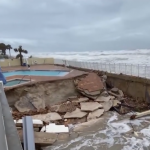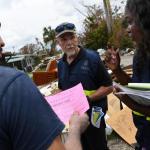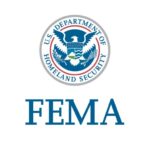Beach, housing recovery
The $100 million to help restore Florida’s hurricane damaged beaches is flowing, the first state-led shelter housing program is underway, and the critical report of the federal government’s disaster recovery system – and how FEMA is responding. It’s all in this week’s Disaster Management Digest.

Beach Recovery Funds: The Governor last week announced the award of $100 million to support beach restoration projects within 16 coastal counties impacted by Hurricane Ian or Hurricane Nicole. It’s part of the December special session legislation (SB 4-A) authorizing $250 million in disaster recovery following the two hurricanes. The money is being distributed among 16 counties, with Volusia County – site of the worst beach erosion from Nicole – set at $37.7 million. Lee County, where Ian made landfall, will receive $23.1 million. The full list of awards is here. Meanwhile, DEP Secretary Shawn Hamilton said “We’re challenging our team to do everything they can to permit safe, reliable and habitat-protected structures approved as fast as possible,” including permits for seawalls to protect buildings from further erosion.
 Disaster Recovery Housing: Also announced last week is Florida’s first ever state-led sheltering and housing program. So far, it’s installed more than 140 travel trailers for Floridians who lost their homes due to Hurricane Ian. The Florida Division of Emergency Management has more than 2,400 additional trailers ordered. Meanwhile, FEMA said Friday that it has housed 100 families in manufactured housing and travel trailers, and 182 units are being made ready for occupancy. Site inspections have been completed for 1,235 more units. FEMA Direct Temporary Housing may be available for up to 18 months for eligible survivors. In addition, more than 1,300 households with 3,200 members are currently staying in hotels temporarily at FEMA’s expense while they look for other lodging. Previously, 3,100 households participated in hotel stays under FEMA’s Transitional Sheltering Assistance program and have found other lodging.
Disaster Recovery Housing: Also announced last week is Florida’s first ever state-led sheltering and housing program. So far, it’s installed more than 140 travel trailers for Floridians who lost their homes due to Hurricane Ian. The Florida Division of Emergency Management has more than 2,400 additional trailers ordered. Meanwhile, FEMA said Friday that it has housed 100 families in manufactured housing and travel trailers, and 182 units are being made ready for occupancy. Site inspections have been completed for 1,235 more units. FEMA Direct Temporary Housing may be available for up to 18 months for eligible survivors. In addition, more than 1,300 households with 3,200 members are currently staying in hotels temporarily at FEMA’s expense while they look for other lodging. Previously, 3,100 households participated in hotel stays under FEMA’s Transitional Sheltering Assistance program and have found other lodging.
 Better Recovery System Needed: The Government Accountability Office (GAO) has found the federal government’s response to disaster recovery is “highly fragmented” and creates unnecessary challenges for state and local officials trying to navigate the more than 30 federal agencies and departments that oversee recovery programs. The GAO report, Disaster Recovery: Actions Needed to Improve the Federal Approach, finds that the current federal approach is often a byproduct of 40 years of incremental efforts to address emerging issues in disaster recovery through legislative reform as well as differing agency regulations and policies. As a result, there is no single federal agency or Congressional committee responsibility for managing the system as a whole. The report includes 11 recommendations for improvement. GAO notes that recent interagency agreements to increase communication and reduce program complexity have helped, but challenges remain.
Better Recovery System Needed: The Government Accountability Office (GAO) has found the federal government’s response to disaster recovery is “highly fragmented” and creates unnecessary challenges for state and local officials trying to navigate the more than 30 federal agencies and departments that oversee recovery programs. The GAO report, Disaster Recovery: Actions Needed to Improve the Federal Approach, finds that the current federal approach is often a byproduct of 40 years of incremental efforts to address emerging issues in disaster recovery through legislative reform as well as differing agency regulations and policies. As a result, there is no single federal agency or Congressional committee responsibility for managing the system as a whole. The report includes 11 recommendations for improvement. GAO notes that recent interagency agreements to increase communication and reduce program complexity have helped, but challenges remain.
 FEMA Responds: Just this month, FEMA formally released a policy that will simplify the Public Assistance (PA) program to help communities recover more quickly after disaster declaration events. The PA Simplified Procedures Policy, first announced last summer, simplifies procedures and streamlines documentation requirements for applicants under the Public Assistance program. It also increases the threshold for PA small projects to $1 million.
FEMA Responds: Just this month, FEMA formally released a policy that will simplify the Public Assistance (PA) program to help communities recover more quickly after disaster declaration events. The PA Simplified Procedures Policy, first announced last summer, simplifies procedures and streamlines documentation requirements for applicants under the Public Assistance program. It also increases the threshold for PA small projects to $1 million.
Other FEMA News: FEMA announced last month that its releasing another $50 million in STORM Act funding (the latest version of the Stafford Disaster Relief & Emergency Assistance Act) to help states such as Florida provide revolving loan funds for hazard mitigation assistance for local governments to reduce risks from natural hazards and disasters. It’s part of an ongoing 5-year $500 million program that lasts through 2026. These are practically zero-interest loans.
Meanwhile, FEMA’s Building Resilient Infrastructure and Communities (BRIC) is making available $2.3 billion for hazard mitigation projects. Last month President Biden signed the Community Disaster Resilience Zones (CDRZ) Act of 2022 into law, amending the Stafford Act to reduce the barriers to entry for vulnerable communities to apply for BRIC grants. FEMA is directed to designate communities most in need of hazard mitigation assistance, as identified by a risk analysis tool that considers such factors as social vulnerability, natural hazards loss exposures, and lack of resilience. CDRZ-designated communities would then be eligible for an increased federal share for BRIC grants, up to 90% (up from the current 75%).
LMA Newsletter of 1-23-23

